The benchmark results of the 'OMEN Transcend 14' Supreme model, which shows crisp performance with the Intel Core Ultra 9 185H and NVIDIA GeForce RTX 4070 Laptop, are as follows

I was able to borrow the OMEN Transcend 14 from HP, which is said to be the world's lightest 14-inch gaming PC, so I decided to run various benchmarks.
OMEN Transcend 14 Series - Gaming PC | HP Japan
Please see the following article for details on the device's appearance and weight:
Photo review of 'OMEN Transcend 14', a gaming PC equipped with GeForce RTX 40 series in a thin and lightweight body - GIGAZINE

First, we used

Checking the GPU installed with '

In addition, the CPU is equipped with 'Intel Arc Graphics' as a built-in GPU.

The storage information confirmed using ' CrystalDiskInfo ' is as follows. It is manufactured by Kioxia and has a capacity of 2TB (2048.4GB). The Performance Plus model and Performance model have a capacity of 1TB.
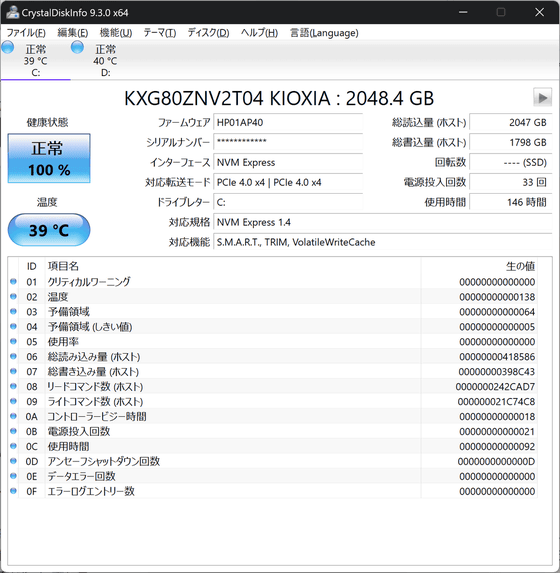
Next, we will perform various benchmark tests. When running the benchmarks, the OMEN Transcend 14 was plugged in, the room temperature was about 22 degrees, and there was no wind.
The transfer speeds of the SSD measured with '

When we ran '
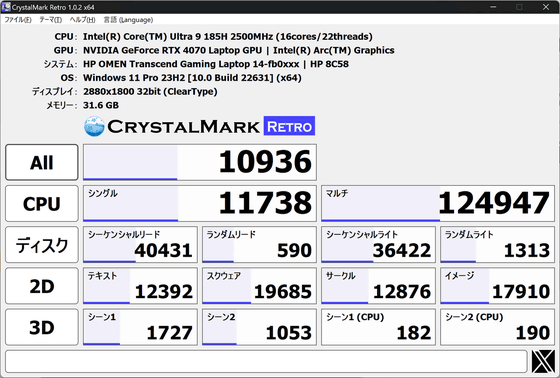
The CPU benchmark results using '

The single-core score details look like this.
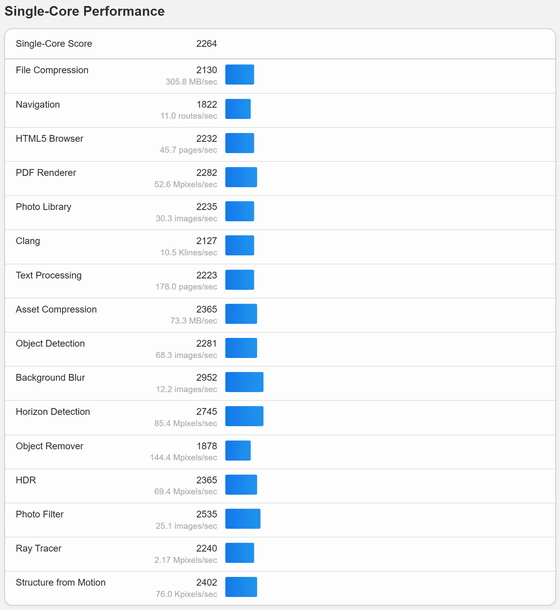
The detailed multi-core scores were as follows:

The overall score of
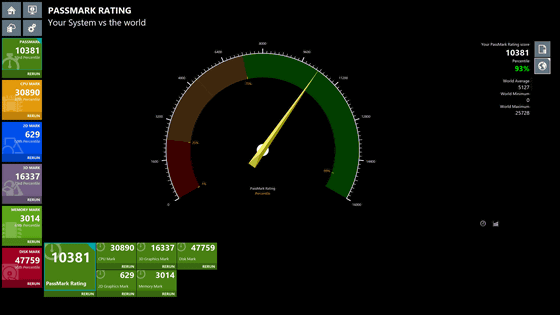
The CPU score was 30890, which is a percentile of 86%, which is also quite high.
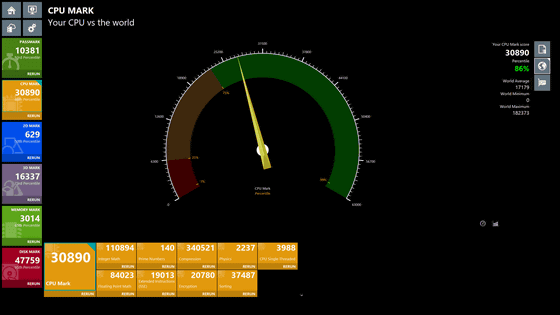
The 2D score was 629, which is in the 49% percentile, so it's pretty much in the middle.
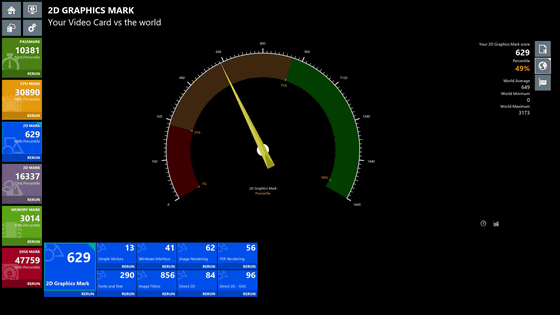
The 3D score was 16377, which is in the 71% percentile, slightly above average.

The memory score was 3014, which is in the 64% percentile. That's about in the middle.
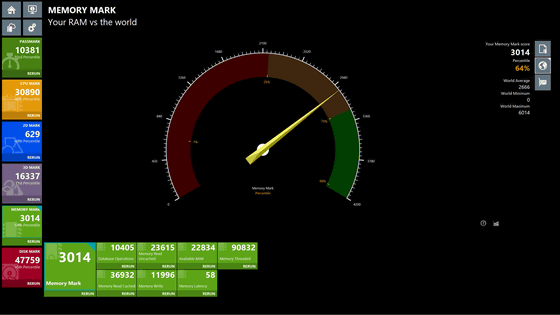
The disk's score was 47759, which is in the 95th percentile. This is a fairly high score, within the top 5%.
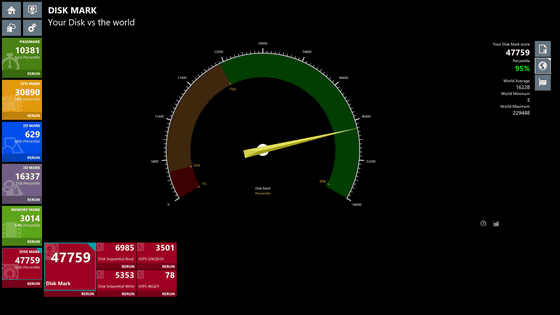
Passmark PerformanceTest also has a function that allows you to save previously run benchmark results as a baseline for comparison, so we've listed the results of running PerformanceTest on
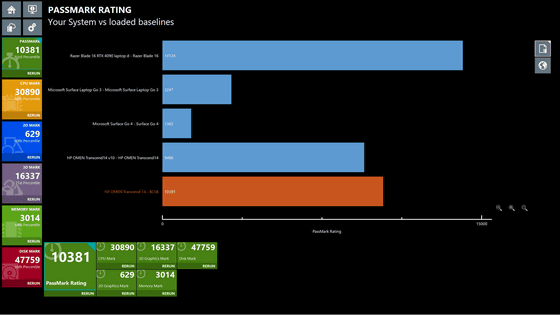
The CPU scores look like this. The top Razer Blade 16 is equipped with a 24-core, 32-thread Core i9 14900HX, so the difference is clear.
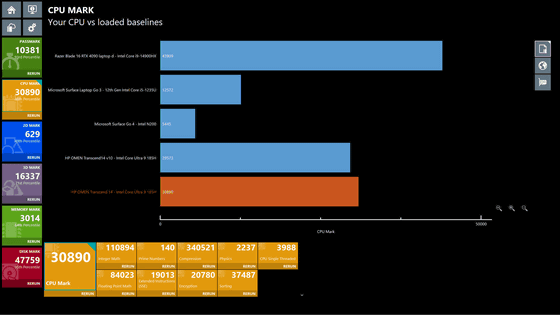
2D score comparison. Since we are comparing the top of the RTX 40 series, the 4090 and 4070, the specs are as expected.
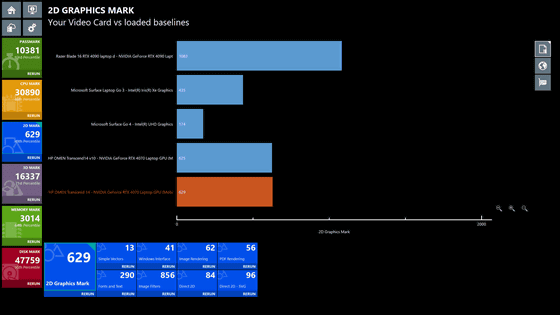
3D score comparison. The Surface 2 models, which are primarily designed for business use and have built-in Iris Xe graphics and UHD graphics, are quite far behind.

Memory score comparison.

Disk score comparison. Here, the OMEN Transcend 14 outperforms the Razer Blade 16.
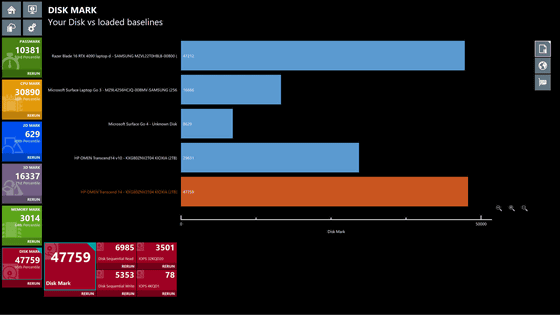
When we ran
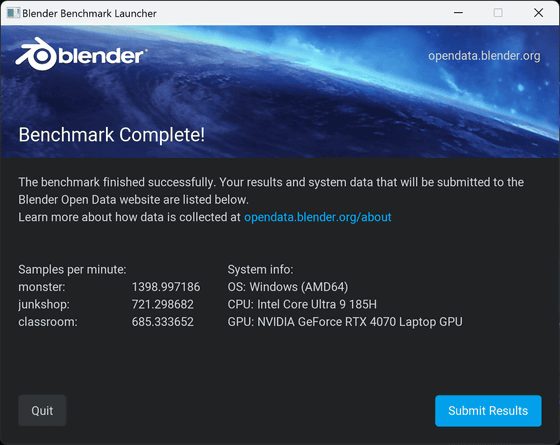
For CPU processing, the monsters were '101.316844', the junk shop was '62.063059', and the classroom was '44.557547'.

The results of running the '
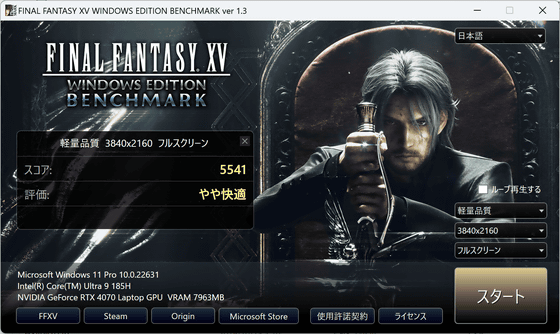
In addition, the results of running all the selectable resolutions and qualities are summarized as follows. There was no screen flickering or stuttering, and it worked without any problems at any resolution or quality.
| Quality/Resolution | 3840×2160 | 2540×1440 | 1920×1080 | 1280×720 |
|---|---|---|---|---|
| Lightweight quality | 5541 (somewhat comfortable) | 9425 (Very comfortable) | 12168 (Very comfortable) | 13576 (Very comfortable) |
| Average quality | 4065(Normal) | 7514 (comfortable) | 10243 (Very comfortable) | 12863 (Very comfortable) |
| high quality | 3463(Normal) | 5988 (somewhat comfortable) | 8027 (comfortable) | 10048 (Very comfortable) |
The OMEN Transcend 14 is the world's lightest 14-inch gaming PC, so some people may want to use it for mobile purposes. We will continue to test whether it can play games satisfactorily even when you are away from home and cannot get a power source, whether the battery lasts, whether the fan noise is not noticeable when playing games in a coffee shop, and whether it can dissipate heat so that you can play games while it is on your lap.
·to be continued
I measured the heat dissipation and battery life of the 14-inch gaming PC 'OMEN Transcend 14' - GIGAZINE

Related Posts:







